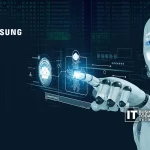NTT East Corporation, Mitsubishi Electric Corporation, and the CC-Link Partner Association (CLPA) have successfully demonstrated real-time monitoring and control of industrial equipment over distances of up to 1,600 km using the industrial network CC-Link IE TSN via an All-Photonics Network (APN), a key technology of IOWN. This achievement shows the promise of remote manufacturing. It also highlights how digital production can be optimized over long distances.
CC-Link IE TSN is among the first industrial networks to use Time-Sensitive Networking (TSN) technology. It ensures clear communication by using the IEEE 802.1AS and IEEE 802.1Qbv standards. Its features are fast real-time transmission, accurate synchronization, and safe communication. These are crucial for remote monitoring and safety in industry.
The demonstration connected industrial equipment at NTT East’s IOWN Lab in Chofu City with remote equipment at eXeFIELD AKIBA in Chiyoda Ward, using an actual APN line. Measured latency and fluctuations met CC-Link IE TSN specifications, confirming seamless real-time communication. By artificially simulating a 1,600 km line delay with OTN Anywhere, the team further verified that CC-Link IE TSN maintains real-time, safe, and synchronized communication even across extremely long distances.
Also Read: Fujitsu and NVIDIA Forge Strategic Alliance to Propel Japan’s AI and Robotics Landscape
Using the Class B spec, communication nodes sync with less than 1 μs accuracy. This helps with the exact tasks required for advanced industrial work. This ability creates real-time digital twins. It allows for remote troubleshooting and cuts down on downtime. It boosts production efficiency and resilience.
Mitsubishi Electric will broaden these demos to different industries.
These include:
- Automotive
- Semiconductors
- Lithium-ion batteries
- Food and beverages
- Pharmaceuticals
- Daily necessities
NTT East, Mitsubishi Electric, and CLPA aim to enhance Japan’s manufacturing. They want to ensure that industrial communications are both secure and quick. They also want them to work over long distances. This will speed up carbon neutrality efforts. It will also create fully digital and connected industrial operations.







